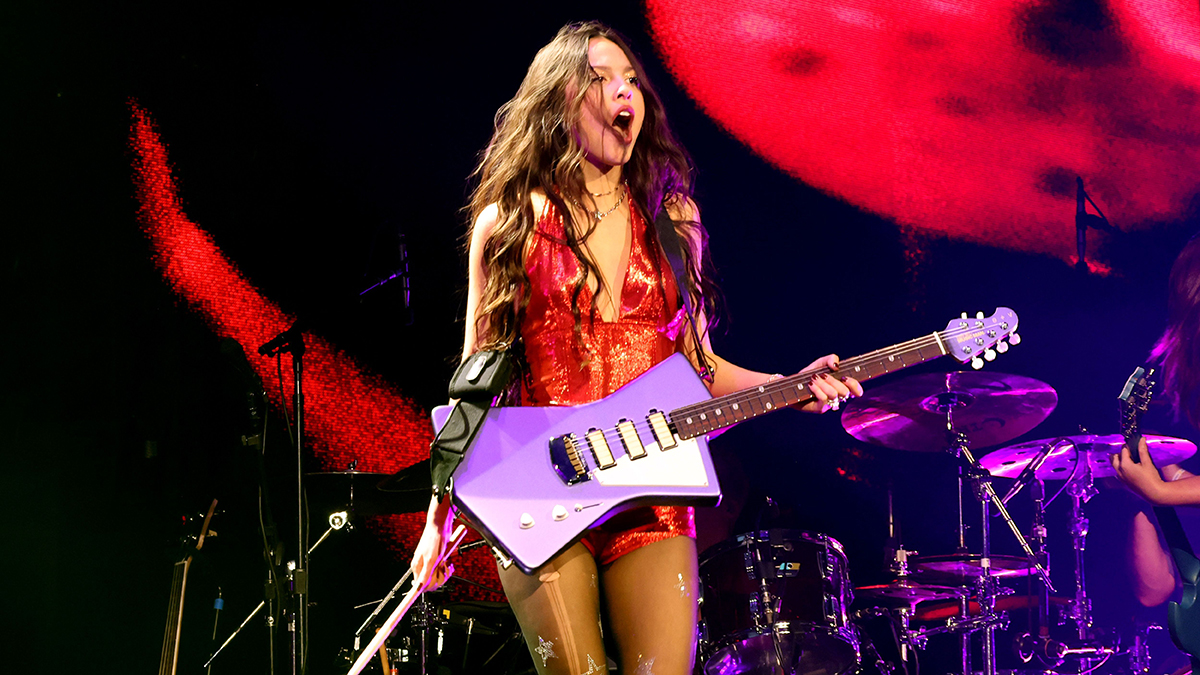“Daron’s the guitarist, I’m the vocalist, and yet he was using my Strat… Then somebody stole it after breaking our car window”: Serj Tankian reflects on his guitar journey with System of a Down, Tony Iommi, Buckethead and beyond
In a rare guitar interview, Serj Tankian breaks down his “fast folk” playing style and upcoming signature Gibson Les Paul, his love of shredders, and freaking out Maynard James Keenan (and being freaked out by Buckethead)
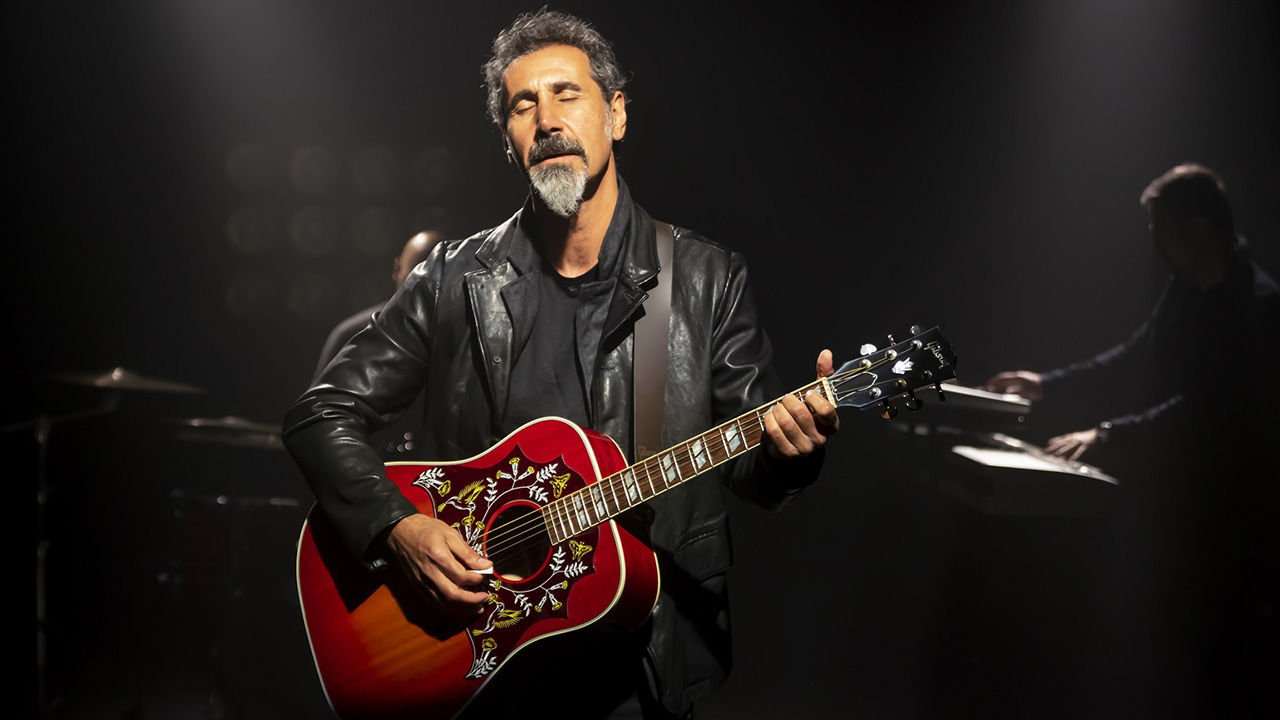
As the singer of System Of A Down, Serj Tankian has headlined the world’s biggest stages, stormed the charts with hit records and scooped up awards in the process. Much has been written about his band being one of the biggest and best of their kind: front-runners in the nu-metal explosion, highly respected for bringing heavy riffs into the mainstream without sacrificing the values that made them such a unique proposition.
But not a great deal is known about Serj Tankian the guitarist. He’s had a couple of signature models over the years and will occasionally pick up an electric for live renditions of SOAD songs like Question! and Aerials.
On his solo releases, however, he’s been more prolific with the six-string in his hands – including his Foundations EP, which came out last month via Gibson Records. Those songs feature some of the detuned and palm-muted metal aggression we’ve grown to expect, with riffs that feel reminiscent of Alice in Chains and Slayer, as well as more acoustic-driven and experimental moments.
“Yeah, that’s mainly me you’re hearing on the Foundations EP,” Tankian tells Guitar World. “Dan Monti – my guitarist in the Flying Cunts of Chaos – did some additional tracks. But a lot of it, from the guitars to the bass and drum programming, is me working alone.
“It’s pretty much homemade. These songs were written a long time ago. We cleaned it up for the release, adding bits here and there, but keeping a lot of the original recordings because we wanted to maintain an archival quality to it.”
He’s spoken in the past of his vocal influences, name-checking Faith No More/Mr. Bungle talisman Mike Patton. What’s less well-known is which guitarists inspired him to play. “There are many!” says Tankian. “I used to play a lot of acoustic guitar at home before starting System with Daron Malakian. His playing actually influenced me a lot and I’m very grateful for that, so he’s the first person that comes to mind.
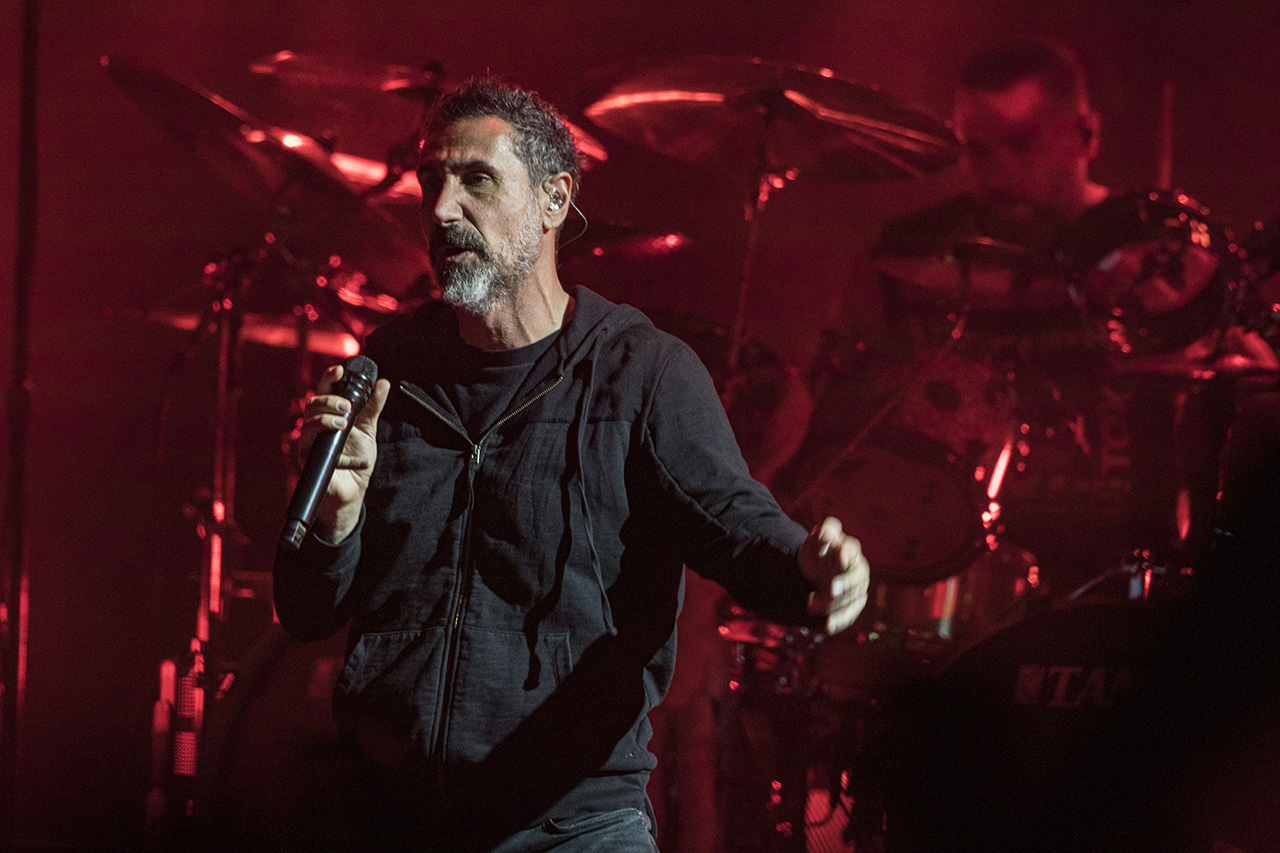
“Zappa is one of my biggest influences in general. I love his playing a lot; then there’s all the shred stuff like Yngwie Malmsteen and Joe Satriani. I can’t play like them if my life depended on it – I just love the guitar as a form of expression on its own.”
All the latest guitar news, interviews, lessons, reviews, deals and more, direct to your inbox!
These days, Tankian approachs music more like a film composer than a metal frontman. Guitars, pianos and keyboards are simply the tools of the trade – from a more pragmatic and less romantic standpoint, they exist purely to help him get the sounds out of his head and into the air.
“Piano was my first instrument,” he says. “The guitar came second and I started that journey some 30-odd years. I would say I use guitars more for songwriting than performance. I don’t think I’m a master of anything, but I have my own way of expressing things through various instruments, whether it’s piano, guitar, vocals or composing for film and TV.
“The same goes for painting. I’m not necessarily the best painter in the world, but I have my own unique way of telling stories through what I do. That’s what an artist is, right?”

You had a signature electric through Jolana guitars, and a Taylor T5 electro-acoustic at one point, too. Now you’ve partnered up with Gibson.
“I have a new signature electric coming out through Gibson, along with the Foundations EP. It’s a Les Paul Standard – I just love Les Pauls. I had a 1985 Custom for many years and an SG that I loved. There was a whole array of Gibsons; I was armed with a lot of guitars but I found myself using the same two instruments more than anything else.
“There was a Custom made for me by the Gibson Custom Shop years ago. I’ve used it a lot on recordings and on stage. It’s got that perfect balance between the Gibson low-end and the PRS or Fender-style top-end. It sits in the middle of those sounds, which is why I’ve always loved its tone.”
Daron’s the guitarist, I’m the vocalist, and yet he was using my guitar for the first couple of years
So what can we expect from your model in terms of the finish and spec?
“The finish is actually going to be the artwork from my EP, so it will be wrapped in this beautiful painting. I chose the painting for the EP cover and it felt right to bring that aesthetic to the guitar. The original piece was sold last year; we’ve been working with Moonlight Arts Collective on the reproductions.
“We haven’t customized the guitar too much – it’s pretty much a Les Paul Standard, with my artwork. We haven’t really tweaked the other elements; but now you’ve said that, there is time. Maybe I need to have a think about changing some things and fucking with the pickups a bit!”
What kind of gear would we find in your studio or at home?
“I’ve gotten rid of most of it. Sorry to let you down, but this isn’t going to be a guitar smorgasbord jerkoff festival! Becoming a film composer, I felt like I needed more space, so I reduced it down to the basics.
“I used to have a beautiful Rickenbacker bass, an old 12-string, a Big Apple Strat and more. I’ve still got a bunch of acoustics, like a Hummingbird and a bunch of Taylors, because I was working with them for a while and using their guitars to record.
“I only held onto a few electrics, including my favorite Les Paul. Over time, I’ve become a minimalist – I like working in a setting that’s more like an art gallery than some LA recording studio. I like seeing light and space.
“So I said to myself, ‘What are the key elements I need to compose?’ And I just kept those things, including a few electrics guitars, some acoustics, one Fender Jazz Bass and my piano. But I have another studio in New Zealand. Half my shit is there!”
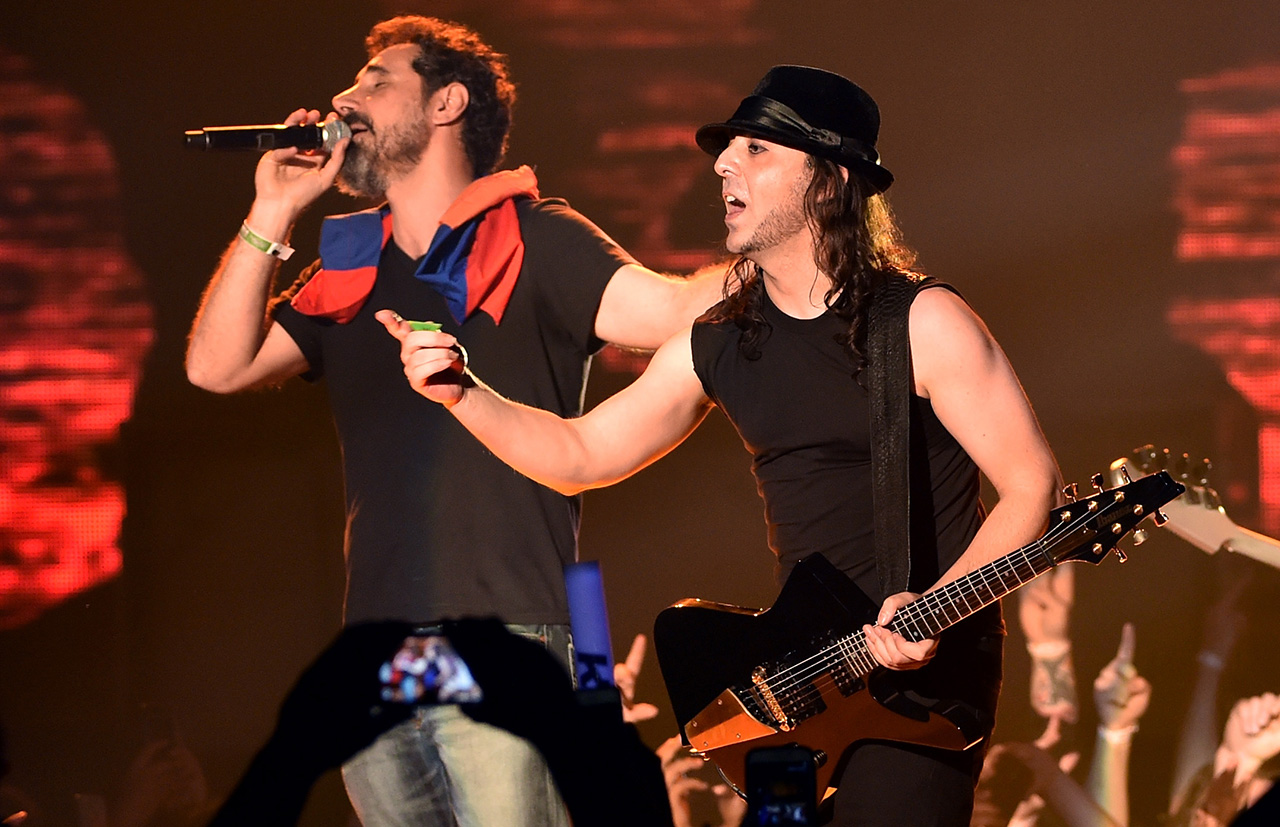
Is the Big Apple Strat the same black finish model with DiMarzios that Daron used to record SOAD’s debut album?
“It’s not that exact guitar – that instrument was stolen. It’s funny: Daron’s the guitarist, I’m the vocalist, and yet he was using my guitar for the first couple of years, which was great. But then somebody stole it after breaking our car window while we were eating at Denny’s after rehearsal.
“I went and got another, the same model with the double humbuckers. But as far as that thick sound you need for heavy metal, it’s all about the Les Paul. There’s no guitar with the kind of bottom-end of a Gibson.”
All I need is my Kemper, though I did keep all my old Boss and Line 6 pedals
What’s your guitar rig at home?
“I have a bunch of pedals in a drawer. I hate to say it, but I’ve mainly been using the Kemper Profiler. I went from having an LA studio with all kinds of amps like a Mesa/Boogie Triple Rectifier stack and a Vox AC30, all running through a Little Labs box so I could run all of them simultaneously and record all three in one performance.
“I had a Sunn amp, too – so I’d connect the cabinet to a Marshall head, plus other things, and just layer shit over and over again. It was really fun. I had drum sets, bass rigs and everything else. Now my studio is more like a composer’s room. The drum sets and bass rigs are gone.
“All I need is my Kemper, though I did keep all my old Boss and Line 6 pedals. I love the Moogerfooger analog delay. That pedal is fuckin’ incredible and I’ve written so many things using it. A lot of my work these days is also done using plugins.”
Obviously Daron is in charge of all things guitar in SOAD, but did you end up playing on any of the albums?
“The ones I wrote I probably played more instruments on. There was Question! from the album Mesmerize, and Vicinity Of Obscenity from Hypnotize. I think it was especially the acoustic stuff where I would play, because my playing style is different to Daron’s.
“I’m more of a picker, almost like a folk guitarist – but faster! I have these picking quotas that I do and I arpeggiate them and whatnot. That’s more my thing. The songs with more of that kind of vibe are the ones I might play on, but Daron generally handles the guitars because he’s much better than I am!”
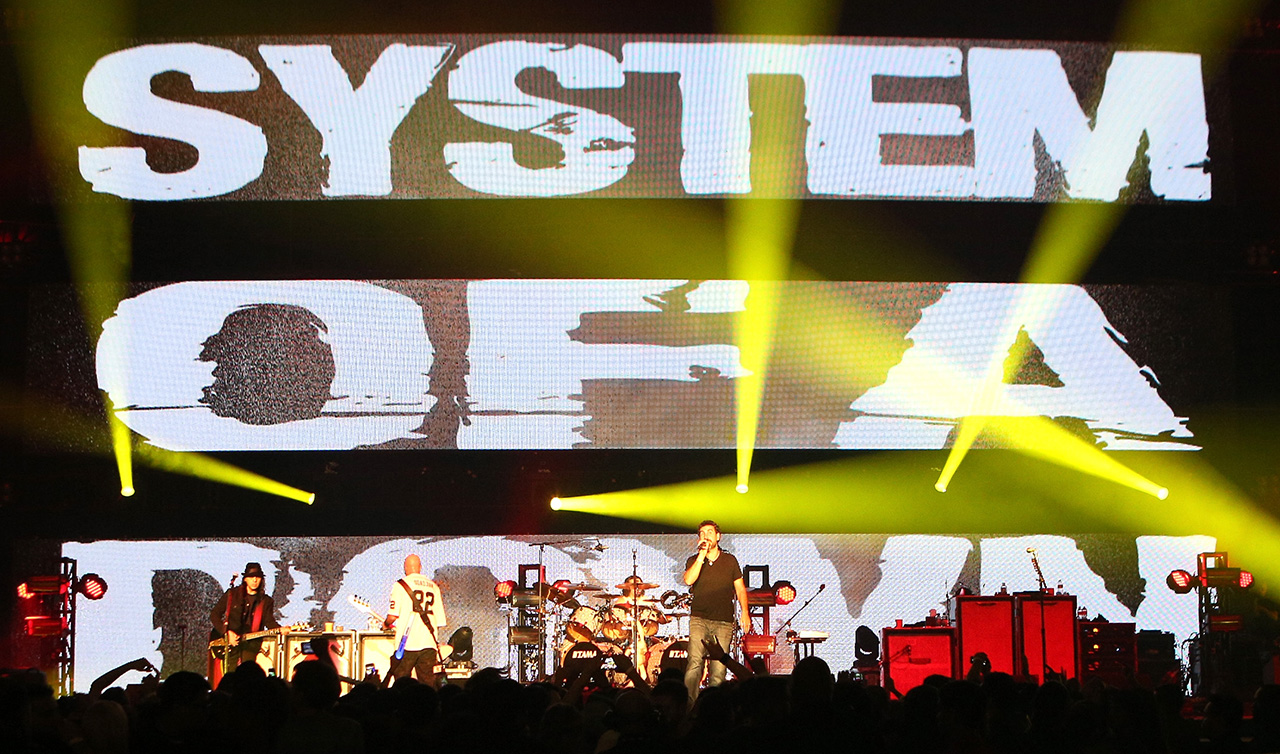
You’ve also worked with Tony Iommi a couple of times – the first song being Patterns from his debut solo album and more recently the track Deconstruction, with you joining him and Gibson CEO Cesar Gueikian...
“Tony is such a gentleman. I remember singing on his first solo record. We were touring with Black Sabbath early on, doing the big Ozzfest when they had the reunion with Ozzy. We all became friends. Obviously, all of us in System had an immeasurable amount of respect for all of them, including Tony. We started to see each other more often and then he asked me to sing on his record.
“We started to see each other more often and then he asked me to sing on his record. For me, that was fuckin’ mindblowing, because he’s such a legend to us. It was a beautiful collaboration. Then System did a cover of Snowblind for a compilation; and many years later Cesar wrote a song, wanting me to sing on it. Then he told me Tony would also be playing guitar on it. I was like, ‘Oh my God, I’m in!’”
Another legend you’ve collaborated with, and even ended up signing to your label, is Brian Carroll, aka Buckethead.
Sometimes I’d wake up to a voice message from Buckethead… he’d just riff for 20 minutes
“Yes! Before I even talk about his playing, just as a human being, he’s one of the nicest people you’ll ever meet – just the sweetest guy. I’m so grateful for him and in so many ways, but I won’t get into all of it now. He’s been incredibly helpful to me.
“His playing is so unique, as most people know. His style is almost impossible to describe. Growing up as a fan of Malmsteen and Satriani, when I met Buckethead I said, ‘Dude, you are one crazy shredder!’ Sometimes I’d wake up to a voice message from him sent at 4am and it would be 20 minutes long.
“He’d say, ‘Hey bro, I wanted to play you something – I hope you dig it and I hope I’m not bothering you,’ and then just riff for 20 minutes. Waking up to messages like that was insane.”
Is it likely you’ll work with him again in the future?
“We’ve been friends for a long time and recently talked about doing a second Buckethead and Friends album. For the original record, Enter the Chicken, I basically looped in a bunch of singers and we all sang on these songs that were completely different to each other. It came out on my Serjical Strike imprint many years ago. He’s so unique when he picks up the guitar. I particularly love the album Colma.
“I saw Bumblefoot in Armenia at a concert I did for the Starmus Festival, along with Brian May, who I got to meet and sing with. I’ve been so honored to meet and perform with these guitar legends from all around the world. I’ve always been a huge Queen fan, so that was pretty mind-blowing.”
If someone didn’t know anything about the music of Armenia, what would you say to help them understand?
“Traditional Armenian music is very beautiful and rich. There are a lot of subtones. I can’t tell you what scales are used – I’m not well-versed enough to explain. But there’s definitely a special feeling to it.
“When we were doing our first Ozzfest tour around 1999, Tool were headlining. I remember meeting Maynard James Keenan and telling him that a lot of his vocal melodies reminded me of Armenian music. I gave him a CD of traditional Armenian orchestral music. He didn’t know who I was; since then we’ve become friends, but he must have been like ‘Okay, cool, thanks!’
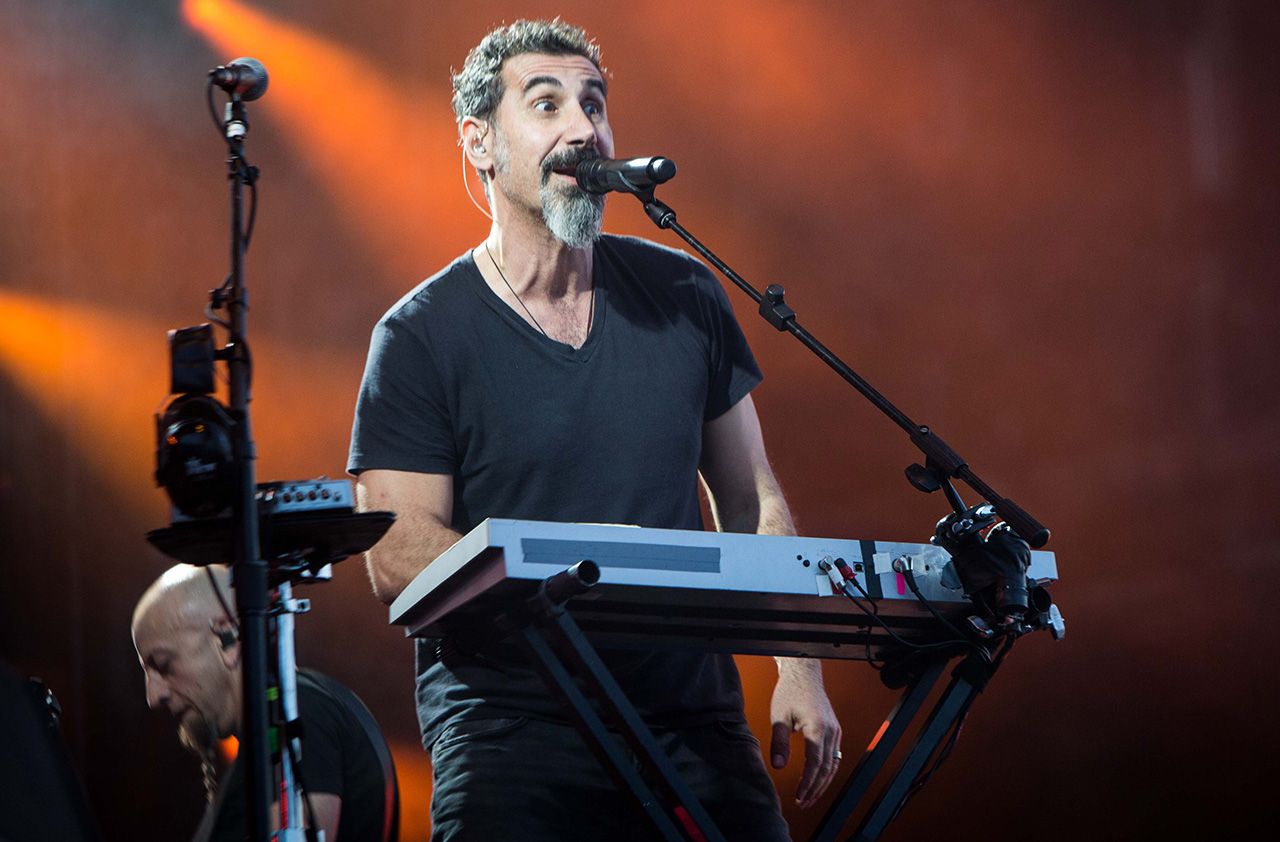
“It’s hard to explain Armenian music. There’s definitely a sense of melancholy, as there is in most of our history. We’ve been under the Ottoman Empire for the last 600 years. So it’s a mixture of beauty and sadness, played through traditional instruments.”
Like the duduk, for example?
“Exactly, like the duduk, which is made from the bark of the apricot tree. There’s also the kamancheh, which is a bowed string instrument, and the qanun, which is a type of zither. I work with a couple of different Armenian orchestras and helped start a virtual instrument company out there called Triple A Audio, making remote recordings for composers all around the world.
I have my own way of playing that’s maybe a bit ethnic, a bit rock and a bit of something else
“We’ve created one virtual instrument for Kontakt already and will be releasing more this year. I’d love to use a traditional Armenian orchestra for a film, composing the score and then recording them live. That would be amazing because it hasn’t been done.”
Which guitarists do you think you most sound like when you play?
“I honestly don’t know. I have my own way of playing that’s maybe a bit ethnic, a bit rock and a bit of something else. It’s hard to know where it comes from. I love all kinds of guitarists – anyone that has their own voice through whatever instrument they use. I’m always looking for something I haven’t heard before, whether it’s a guitar player or opera singer. I love being blown away and influenced by new things.
“I guess it’s more of a writing style I have that’s different. It might be the way I use bends or rhythmic ideas on acoustic. Zappa famously said, ‘Writing about music is like dancing about architecture,’ right? You mentioned Alice In Chains – I have to say, when I pick up an acoustic guitar, there is probably a Jerry Cantrell influence.
“The first cover I ever played was their song Rooster – and I never really do covers. I love their dark vibe and the amount of depth in their darkness. I know about 10 songs written by other people, and that’s one of them. I’ve always created my own music rather than learn other people’s songs. In that sense, I’m a horrible musician!”
The reaction to the SOAD tracks Protect The Land and Genocidal Humanoidz released in 2020, after a 15-year creative break, was quite phenomenal. How close might we be to a new album?
“I think it’s pretty much the same answer I’ve been giving for many years. I don’t know. We don’t know. It’s a matter of finding the right way forward. We all need to agree how to do it in an egalitarian format.
“A lot of this is highlighted in my book, Down With the System, where a lot of truths are respectfully told. If we can agree on the blueprint of how to move forward, it is possible. Until then, we wait.”
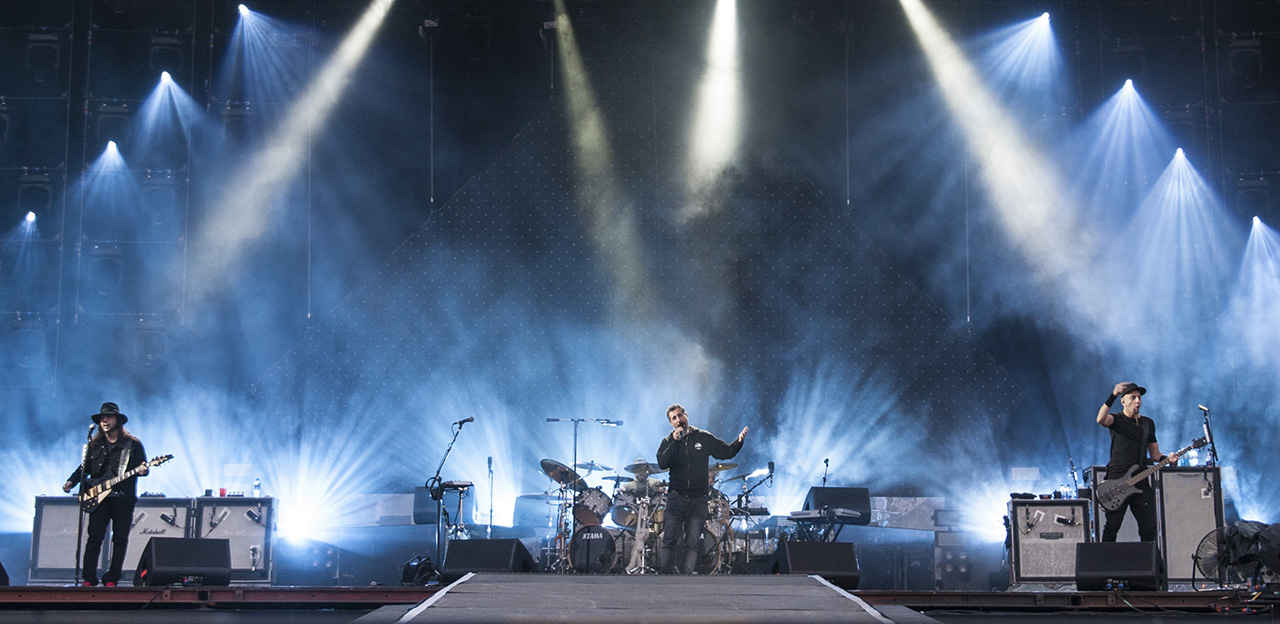
There have been discussions of the band continuing with a different singer. But it seems as if most fans would reject that.
“I don’t think you could have System without any of us. I’ve always said I don’t want to be in that band with other people, because there’s this uniqueness to what we do. Okay, if someone can’t make a show and we get a sub in, then maybe... but that’s a unique circumstance.
“I wouldn’t want to be in a band with anyone else other than Daron, Shavo Odadjian and John Dolmayan. There’s a specialness about what happens when we play together – it can only come from the four of us. System would never be the same with anyone else.
I do hope that one day we can all see eye-to-eye and just do something… whether it gets released or not is secondary
“That being said, I didn’t want to constrain the others and their ability to make a livelihood doing what they love. So I opened the door to the possibility of them being able to work without me, and that’s always been on the table.
“They might want to tour a lot and I might not, or they might want to make a record that I don’t want to make. I don’t want to stand in their way. But I do hope that one day we can all see eye-to-eye and just do something for the fuck of it. Whether it gets released or not is secondary.”
Maybe comparisons can be drawn to Tool, given that Maynard is said to be the one taking longer during the writing process. And also, just like Tool, System set the bar so high.
“Yeah, it’s almost like you can’t get over that. But one of my new songs, Justice Will Shine On, and another song Daron had written about the Armenian Genocide, were actually from 2015. We were considering releasing them back then, but there was a level of constraint or self-restriction.
“Like, ‘Is this what we should be releasing now? Is this the first thing people should hear?’ But I’m not into that kind of thinking. I’m still the same musician I was in the early ’90s. I want to explore and create something new. If we think it’s good enough, then fuck everyone else!”
- Foundations EP is out now.
Amit has been writing for titles like Total Guitar, MusicRadar and Guitar World for over a decade and counts Richie Kotzen, Guthrie Govan and Jeff Beck among his primary influences as a guitar player. He's worked for magazines like Kerrang!, Metal Hammer, Classic Rock, Prog, Record Collector, Planet Rock, Rhythm and Bass Player, as well as newspapers like Metro and The Independent, interviewing everyone from Ozzy Osbourne and Lemmy to Slash and Jimmy Page, and once even traded solos with a member of Slayer on a track released internationally. As a session guitarist, he's played alongside members of Judas Priest and Uriah Heep in London ensemble Metalworks, as well as handled lead guitars for legends like Glen Matlock (Sex Pistols, The Faces) and Stu Hamm (Steve Vai, Joe Satriani, G3).






